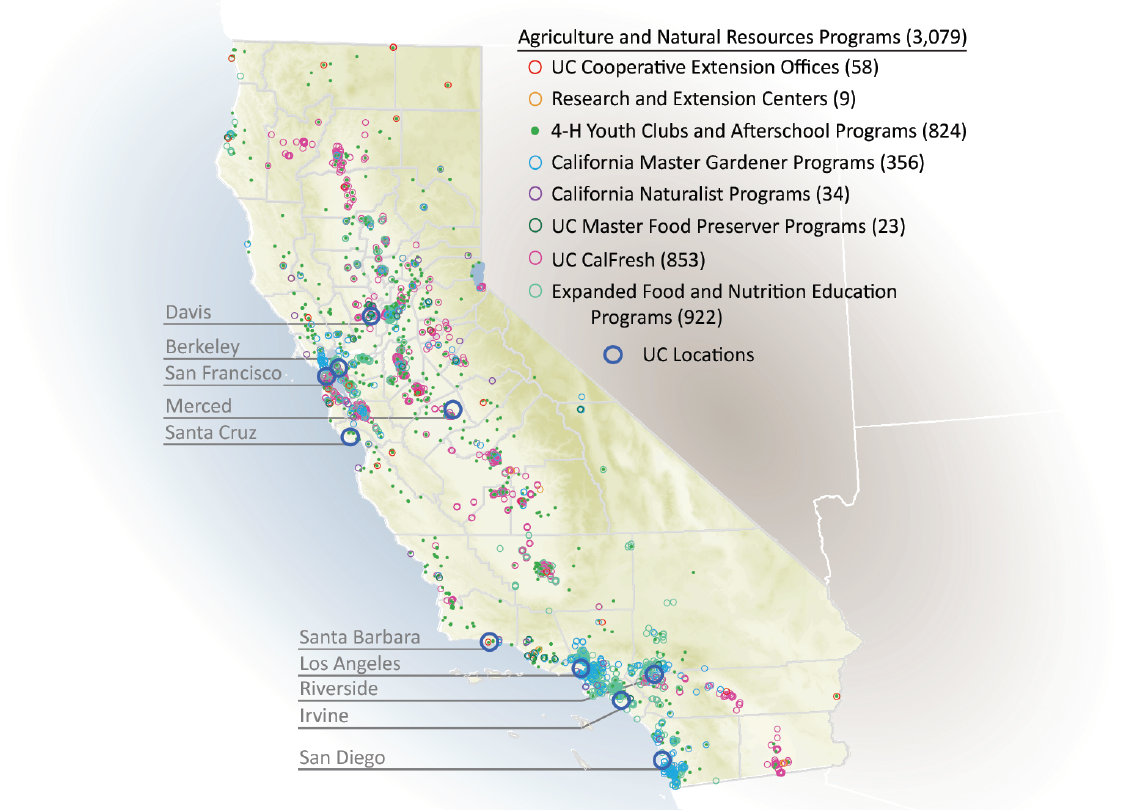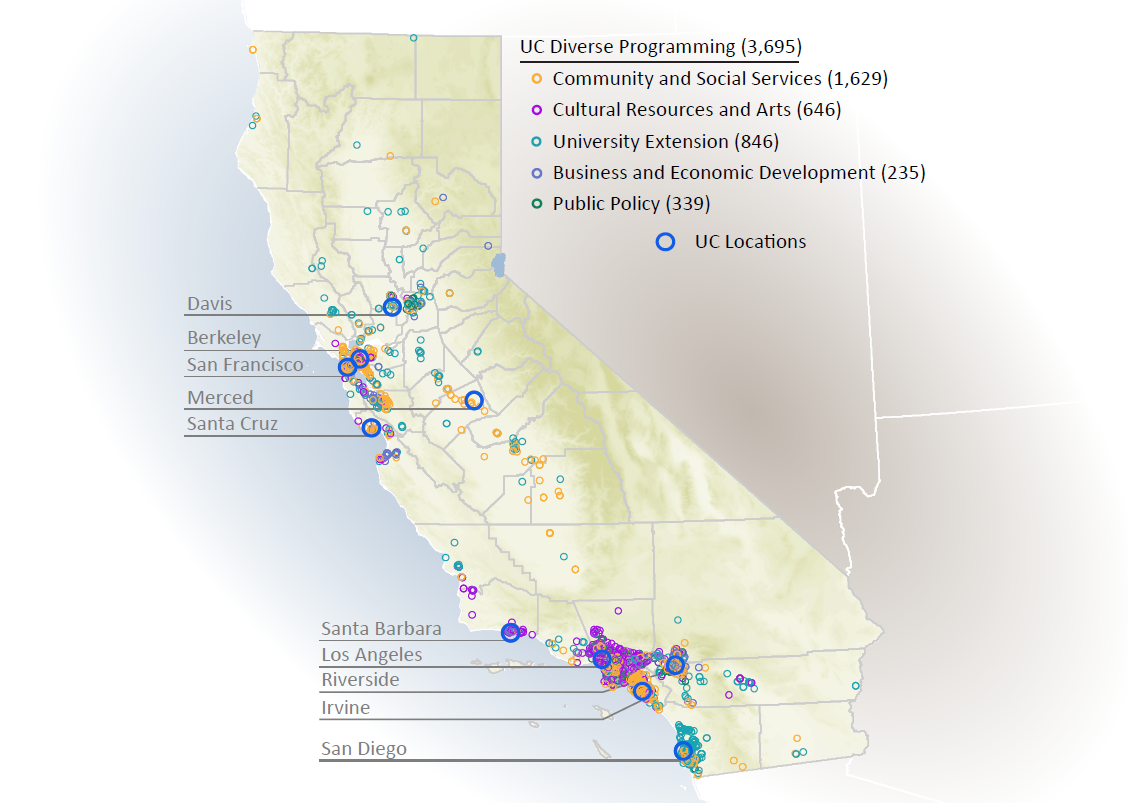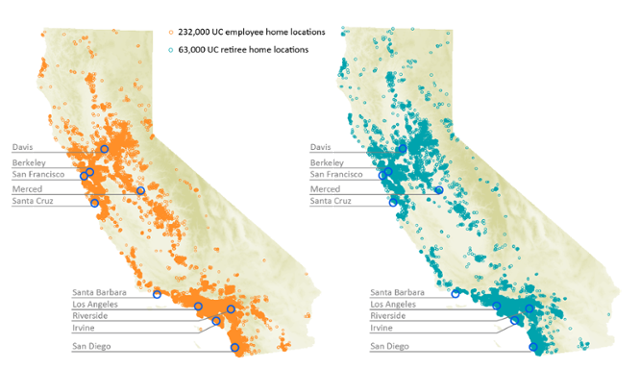Hijab Khan of Pakistan is an environmental engineering student 7,500 miles and a pandemic away from UC Davis. But still, she has inspired at least one student here, gained a mentor and had what she considers one of the most valuable experiences of her life.
Khan is one of three female students from Pakistan who participated — virtually — in two summer courses and individual mentorships at UC Davis through the U.S.-Sister2Sister Exchange Program. “Without a doubt, it is one of the best experiences of my life,” said Khan, who is entering her final year of undergraduate study at the University of Engineering and Technology in Lahore, Pakistan.
Led by American University and funded primarily by the U.S. Department of State, Sister2Sister enables about 20 Pakistani women each summer to participate in undergraduate courses at American universities. The courses are mostly in the fields of science, technology, engineering and mathematics, or STEM. The program invited UC Davis to be a hosting partner, and this was the campus’s first summer to do so. A total of eight universities provided opportunities for 16 Pakistani women.
“It’s the perfect fit for us given UC Davis’ emphasis on access and equity in STEM education as well as on global engagement and learning,” said Michael Lazzara, associate vice provost of academic programs and partnerships for Global Affairs. Sister2Sister aims to help young women “overcome cultural limitations that inhibit their participation" in pursuing competitive careers, and to contribute to Pakistan’s economy, according to the program’s website. “The ability of these young women to complete university is not a given,” said Beth Broome, senior advisor to the provost on STEM Strategies at UC Davis.
Part of the UC mission
Along with teaching and research, UC contributes to the well-being of the state’s population and economic growth through its public service efforts. UC’s impact goes well beyond its on-campus activities. UC has a significant presence in nearly every community throughout California.
Educational outreach forms a crucial part of UC’s service to the state, including a network of world-class museums, libraries, herbaria, and other facilities open to the public for shared learning. Every UC campus administers hundreds or thousands of community-based programs across a range of foci, from community and social services to teacher professional development and K–12 student services.
The University exhibits a steadfast commitment to public service in part through support of sustainable agriculture, environmental stewardship, healthy families, and education. UC Agriculture and Natural Resources (UC ANR), the UC Natural Reserve System (NRS), the community-based programs of the Division of Diversity and Engagement, and all ten campuses are highlighted in this chapter.
UC Agriculture and Natural Resources
UC’s land-grant history
The Morrill Land-Grant Acts emphasized that the role of the University is to develop “useful and practical information … and to promote scientific investigations and experiments.” The Acts created a federal-state partnership for agricultural research and technology transfer. The University of California was chartered in 1868 as California’s land-grant university. Subsequently, the Hatch Act of 1887 established state Agricultural Experiment Stations. In 1914, the Smith-Lever Act established Cooperative Extension services to extend university research through outreach and education. UC’s Division of Agriculture and Natural Resources is UC’s land-grant arm. State legislation incorporated county governments to become the third legal partner, such that today, UC ANR represents a three-way partnership with federal, state, and county governments.
UC ANR personnel and programs deliver resources from the UC system to Californians — even if there is no campus nearby. UC ANR forms teams, across UC and beyond, to develop innovative, multidisciplinary, science-based solutions to complex issues. UC Cooperative Extension (UCCE) is the education and outreach arm, serving all 58 California counties by bringing UC research to local communities. UC ANR’s mission is to engage UC with the people of California to achieve innovation in research and education that supports:
- Sustainable, safe, and nutritious food production and delivery
- Economic success in a global economy
- A sustainable, healthy, and productive environment
- Science literacy and youth development programs
UC ANR statewide network
UC ANR operates a statewide network of researchers and educators dedicated to the development and application of knowledge to address local agricultural, environmental, and health issues. This network of local UC Cooperative Extension sites and Research and Extension Centers (RECs) is often the face of the University to Californians with no other connection to the University. In 2021, close to 150 Cooperative Extension Advisors were conducting research, outreach, and education in all 58 counties from local UCCE offices. Nine statewide RECs provide education for the public and places for researchers to conduct field experiments. Approximately 560 Agricultural Experiment Station researchers are located at three campuses, and 120 Cooperative Extension Specialists are located at six campuses, RECs, and county offices. UC ANR maintains and enhances connections that engage UC with the people of California through more than 3,000 local partnership programs (10.1.1).
UC ANR’s statewide California Naturalist Program promotes stewardship of the state’s natural resources through education and service. The program has worked with over 60 partner organizations that deliver the courses and have certified a community of over 4,000 participants. The program established a framework for operationalizing Justice, Equity, Diversity, and Inclusion (JEDI) efforts using a Four “R’s” approach: 1) investing in Relationships, 2) focusing on local and cultural Relevance in its content, 3) breaking down barriers to Recruitment or access, and 4) promoting individual and program Responsibility and accountability. In 2021 over 500 certified California Naturalist volunteers supported conservation and restoration efforts across 45 counties, including close to 400 hours in environmental and climate justice. In addition, the program formed new relationships with tribal communities, including the California Tribal College and the Anahuacalmecac School.
The UC Master Gardener Program extends to the public research-based information about food gardening and sustainable landscaping. In 2021 there were 6,100 UC Master Gardener volunteers in 53 California counties. Given the context and restrictions posed by the COVID-19 pandemic, the program offered classes and plant clinics online, expanded and maintained demonstration gardens as allowed by public health orders, provided an online system for plant sales, and increased social media outreach to share science-based gardening information. The UC Master Gardener volunteers contributed over 415,000 public service hours with an estimated value of almost $14 million. Public participants adopted gardening practices that increased access to fresh produce, which has been especially important given the increased food insecurity experienced during the COVID-19 pandemic. Over half of the more than 830 members of the public who participated in the volunteer-led public education events reported that they applied gardening practices that reduced food loss. Close to 100 volunteers donated produce to community programs that distribute food to individuals in need of food assistance. In Ventura County alone, over 450 pounds of fruits and vegetables were harvested from the local UC Master Gardener sites and donated to local hunger relief agencies.
UC ANR’s statewide 4-H Youth Development Program uses a positive youth development framework and promotes experiential, inquiry-based science learning. In response to the COVID-19 stay-at-home orders, the program pivoted to remote instruction, and was able to engage close to 50,000 youth aged 5–19 working in partnership with over 6,700 caring adult volunteers. Nearly 89 percent of 4-H youth statewide who responded to a program evaluation survey indicated that they respect the differences and strengths of individuals on the team. Critical teamwork skills are increasingly important as California and the U.S. are becoming more racially and ethnically diverse. These outcomes are fostered through ongoing efforts to integrate more equity and Latino(a) youth development practices into its programming. For example, in UCCE Santa Clara County, all programs are free, program materials are culturally relevant and in Spanish and English, and transportation is provided for youth to participate in events. 4-H staff engage in familial relationships with youth and parents, and communicate via WhatsApp since most youths do not have access to the Internet at home. Long-term impacts will increase the diversity and sense of belonging for diverse youth and families in 4-H and increase Latino(a) youths’ access to various career pathways.
UC ANR manages two statewide nutrition education programs: the California Expanded Food and Nutrition Program (EFNEP) in 24 counties, and the CalFresh Healthy Living, University of California Program (CFHL,UC) in 32 counties. EFNEP delivers research-based nutrition education to limited-resource families with young children to improve healthy lifestyle choices. In 2021, EFNEP had over 9,200 enrolled in educational series. Program evaluation findings from 2021 indicate that EFNEP adult graduates statewide averaged a $41.63 savings in their monthly grocery budget, which is a $500 savings per year. Given the COVID-19 pandemic’s significant disruption to family finances from cascading shutdowns and layoffs, this extra money monthly made a difference. CFHL,UC operates under a joint agreement involving the USDA, California Department of Social Services, and UC Cooperative Extension to serve persons eligible for the federal Supplemental Nutrition Assistance Program (SNAP). In 2021 CalFresh Healthy Living, UC partnered with 254 SNAP education sites to make policy, systems, and environmental changes that reached more than 28,400 people. Statewide these sites adopted or enhanced food access and edible gardening strategies, such as new or expanded edible gardens at 93 sites and initiating or expanding mechanisms for: distributing seedlings and/or other materials to families or communities for home gardening at 84 sites; use of garden produce for meals and snacks at 22 sites; and distributing produce to families/communities at 17 sites.
Impact: Developing an inclusive and equitable society
One of UC ANR’s seven public values is developing an inclusive and equitable society. UC ANR is committed to reaching all segments of the state’s population. The COVID-19 pandemic brought to light the importance of essential workers in maintaining food system resiliency and, at the same time, worsened the inequities they face. In particular, farmworkers experienced exacerbated challenges in maintaining healthy, safe, and sustainable livelihoods during the pandemic, given dense living and working conditions and vulnerable legal status. UC ANR works internally to build cultural competency skills and develop proactive policies to increase diversity and inclusiveness and promote equity. UC ANR academics live and work in California communities, building trust and credibility to solve local problems together. Through these efforts, UC ANR strives to foster greater access to social and economic opportunity and advancement for all Californians. A few highlights from 2021 follow, which further illustrate how the food system also benefits through workforce retention, improved food safety, and protected water quality.
Working with small-scale farmers from socially disadvantaged communities
The new Irrigated Lands Regulatory Program aims to protect groundwater quality and requires farmers to report data to regional water quality coalitions. Complying with the proposed regulations is especially challenging for these growers due to language and cultural barriers. In 2021, a UCCE community-based academic provided one-on-one technical assistance that helped over 50 socially disadvantaged farmers complete the required paperwork to comply with water regulations, avoid costly fines, and protect groundwater quality.
To support food safety compliance for small-scale, culturally diverse growers in California, UCCE established a partnership with the California Department of Food and Agriculture (CDFA) — the Produce Safety Technical Assistance Program. A website was developed including information on food safety in multiple languages (English, Spanish, Mandarin, Hmong, lu Mien), and six UC ANR Community Education Specialists were hired across four counties to support small farm food safety efforts with funding from CDFA. As part of this program, UCCE conducted a survey to determine the consumer preparation practices of Hispanic and Asian specialty crops, which received over 6,000 responses. The information was used to provide recommendations to the U.S. Food and Drug Administration (FDA) so that proper edits could be made to the Food Safety Modernization Act Produce Safety Rule. UCCE was invited to present the data to FDA in summer 2021 to advocate for the addition of 14 of the Hispanic and Asian specialty crops to the “Rarely Consumed Raw List.”
Improving living and working conditions for California’s food system and farm workers
A UC Cooperative Extension (UCCE) Specialist at UC Berkeley working on social justice in agriculture conducts evaluation research on social certification in agriculture. The researcher works with the Equitable Food Initiative (EFI) in its continuous improvement process to strengthen its social certification and workforce development program. EFI’s primary goal is to improve the working conditions of farmworkers in California and beyond. To date, EFI has implemented many of the evaluation-based recommendations from a 2017 UCCE report. Between 2017 and 2021, the number of EFI-certified farms increased from 19 to 48 and, relatedly, the number of workers on certified farms increased from 10,000 to more than 57,000, magnifying the impact of UCCE’s recommendations that improve the working conditions of farmworkers.
Increasing diversity, inclusiveness, and cultural competency in California's workplaces
Another UCCE Specialist located at UC Berkeley served on the California FarmLink Board and helped establish a new Diversity, Equity, and Inclusion (DEI) Committee to assess and develop principles and best DEI practices for this organization. California FarmLink helps provide farmers with equitable access to lending, education, and land. A survey was administered to like-minded non-profits assessing the status of DEI principles, practices, challenges, and successes the organizations had with implementing DEI practices. The report from this survey was presented to the organization and at the Eco-farm conference, which draws statewide, national, and international participation of over 1,600 people. As a result of this effort, the California FarmLink organization increased the adoption of new DEI principles and practices, and increased diversity of the board in both racial and farmer representation. In this way, UCCE helped promote workplace diversity, equity, and inclusiveness.
Another UCCE scientist was the lead on a $1M grant from the National Institutes for Health for community-based participatory research. A course in human subject research ethics was developed so that the community researchers could receive their Collaborative Institutional Training Initiative certifications. Community researchers from three Northern California Tribes were engaged: The Mechoopda Indian Tribe of the Chico Rancheria, the Grindstone Indian Rancheria of Wintun-Wailaki Indians, and the Round Valley Indian Tribes. Two clinics, the Northern Valley Indian Clinic, Inc., and the Round Valley Indian Health Center, also collaborated with this project. All community and clinic partners, 40 people total, passed the course to be certified to conduct research with human subjects on federally funded projects.
Educational partnerships
For nearly 50 years, the University of California’s Student Academic Preparation and Educational Partnerships (SAPEP) programs have helped prepare California students for higher education (10.3.1). Program activities are centered on student academic preparation, community college articulation support, school and community partnerships, and online and technology-assisted services. SAPEP programs served nearly 108,000 K–12 students at more than 2,000 public schools, and over 20,000 community college students at 112 community colleges in 2020–21, the most recent year available.
The goal is to promote achievement by supporting academic preparation and college readiness. Programs include the Early Academic Outreach Program (EAOP), which focuses on “a–g” course completion (a prerequisite for admission to UC and CSU); K–20 Regional Intersegmental Alliances (aka P–20), creating ties between campuses, schools, local communities, and business organizations; The Puente Project, focusing on college-preparatory English skill development; Transfer Prep, focusing on community college transfer support; and Mathematics, Engineering, Science Achievement (MESA), focusing on STEM (science, technology, engineering, and mathematics) skills development.

The Mathematics, Engineering, Science Achievement (MESA) program integrates UC’s core missions of teaching and public service by focusing on the academic preparation of students at K–12 schools, community colleges, and four-year universities. Through its three components — the MESA College Prep Program (formerly known as MESA Schools Program or MSP), the MESA Community College Program (MCCP), and the MESA University Program (formerly known as MESA Engineering Program or MEP) — MESA serves more than 23,500 California students annually.
MESA College Prep centers are housed in 18 locations and serve more than 14,000 students at about 350 K–12 schools. Centers offer classes that reinforce math and science content standards. MESA activities include workshops aimed at strengthening study skills and monitoring progress.
The MESA Community College Program (MCCP) manages 40 centers at community colleges, serving around 4,500 students annually. These centers provide academic excellence workshops, orientation courses, academic advising, and counseling activities to help community college students transfer to a four-year university in a timely manner.
The MESA University Program operates 13 centers located in public (UC and CSU) and private universities across the state. Serving nearly 5,000 students annually, these centers assist college students in attaining four-year degrees in engineering and computer science by providing tutoring and academic skills workshops. In partnership with local industry leaders, MESA University Program centers also provide career and professional development opportunities for students. In addition to the activities UC undertakes to strengthen K–12 and community college students academically, UC plays an important role in preparing California’s teacher workforce. UC’s Teacher Education Programs prepare teacher candidates to engage students in rigorous, relevant, and inquiry-based educational experiences. Located at eight UC campuses, Teacher Education Programs recruit, prepare, and support educators who are committed to academic excellence, equity, and integrity, and to cultivating the highest levels of achievement and opportunity for all students.
UC also provides ongoing support to educators already in the workforce through professional development programs. For example, the California Subject Matter Project (CSMP) is a network of nine discipline-based statewide projects, providing more than 1,800 professional development events for educators at more than 4,000 schools each year. CSMP professional learning opportunities are aligned with state-adopted standards and are collaboratively designed by K–12 and university educators to enhance learning for all students (10.3.2).
Social and economic impact
Including the programs of ANR, the Natural Reserve System, and UC’s educational partnerships mentioned above, the University of California administers more than 20,000 community-based programs across the state. Because the well-being of every California citizen and community is important, all campuses sponsor and manage programs far from their locations. For example, UC San Diego, near the southern border of California, runs clinical internship sites in Crescent City and other communities near the northern border of California; UC Davis, in the Central Valley, runs the Oiled Wildlife Care Network in Morro Beach on the central coast; and UC Santa Barbara, on the California Coast, runs the Outdoor Science Education Program in several locations on the east side of the Sierra Nevada range. All of UC’s community-based programs may be discovered and explored at: ucal.us/maps.
UC’s social impact
Through community and social services programs and cultural resources and arts programs, UC administers internship and field study programs that connect students and alumni with their communities; volunteer centers working on issues such as domestic violence, fair housing advocacy, and employment training; arts education and outreach programs that teach art, dance, drama, music, and digital arts in the community (10.4.1).
UC’s economic impact
Through business and economic development programs and public policy programs, UC facilitates internships offered in partnership with local companies, where students gain both UC credits and professional experience. Other programs bring local high-tech and green-tech companies together with motivated individuals to foster student participation in community economic development (10.4.1).
As California’s economy becomes increasingly dependent on highly educated workers, the role of the University of California in training the state’s future workforce becomes more vital. Industries relying on skilled workers in the STEM fields represent a major component of California’s economy. UC awards half of the state’s bachelor’s degrees in STEM fields.
More than 1.2 million UC alumni are known to live and work in California (10.4.2). They are leaders, volunteers, and contributors to the vitality of its communities, businesses, and culture. UC’s operations also add significantly to the state’s economy. With approximately 210,000 employees, UC is California’s third-largest employer (10.4.3). True to its land-grant mission, the UC system touches many aspects of life in California. The UC public service mission has evolved in tandem with the changing needs of our state and local communities, and has developed programs and partnerships that improve the lives of all Californians.
UC Natural Reserve System
Note about the UC Natural Reserve System (NRS): While the NRS has public service at the core of its mission and has always been represented in the Public Service chapter of the UC Accountability Report, it is, in fact, part of the Research and Innovation Division of the University of California. This year, information about the NRS has been moved to the Research chapter. One indicator of its public service impact remains here as 10.2.1.
For more information
UC in California interactive map (website)
includes California counties, regions, campuses, UC system, and California elected representative districts
UC Information Center public service (dashboards)
Division of Agriculture and Natural Resources (website)
Natural Reserve System (website)
MESA Programs (website)
CalTeach (website)
Early Academic Outreach Program (EAOP) (website)
The Puente Project (website)
California Subject Matter Project (website)








